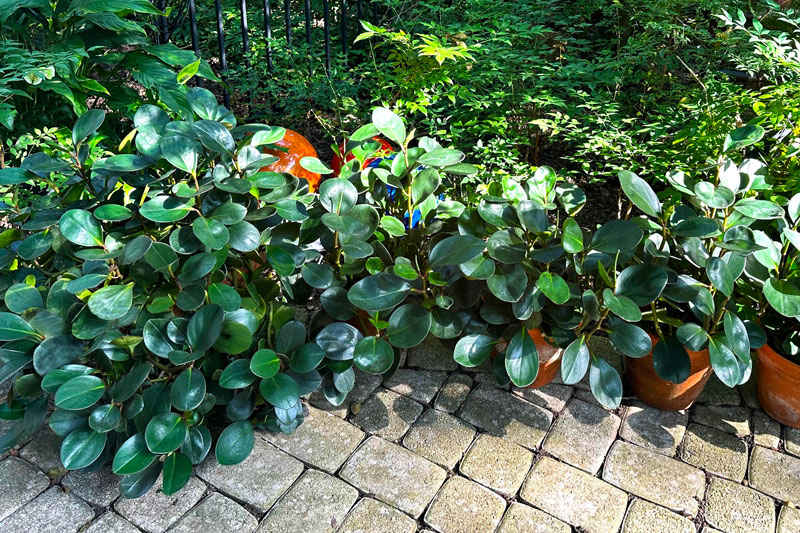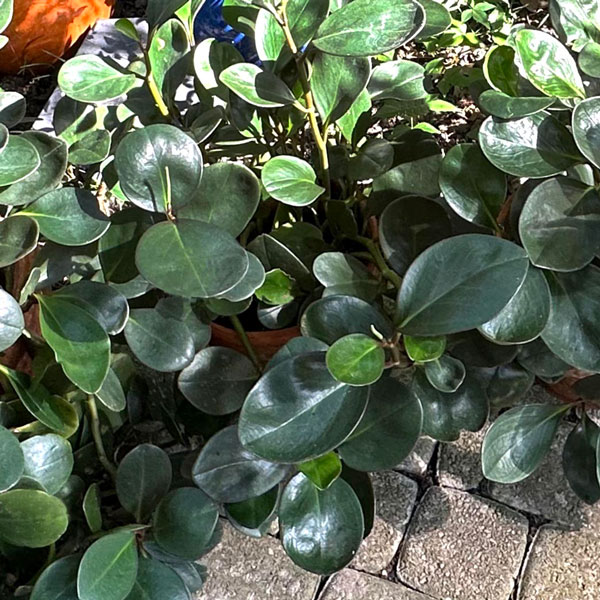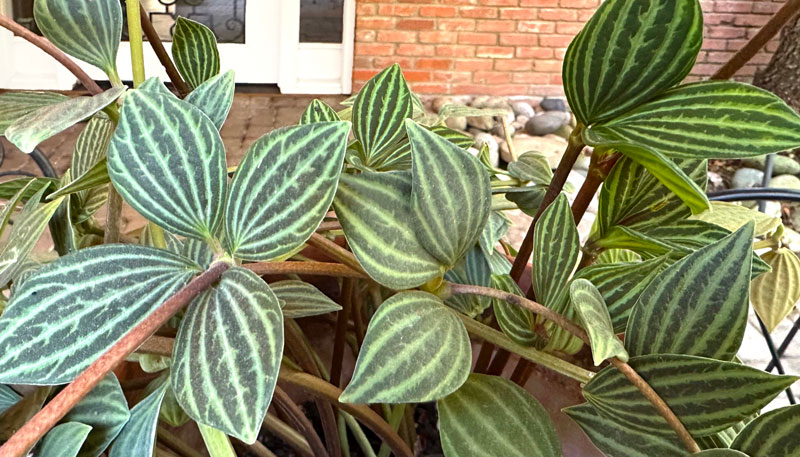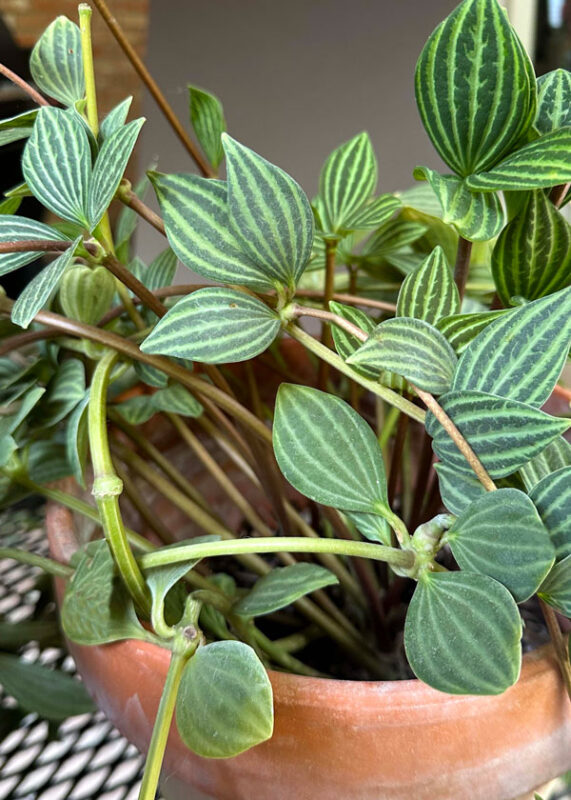Double peperomia, please…
You’ll usually find peperomias mixed in with succulent plants. There are scores of species and hundreds of cultivars. Some are, at least for me, challenging, but many are very easy and lovely to have in your collection.
Red-edged peperomia (Peperomia clusifolia)
I bought this plant from a mail order source in Carlsbad, California. Hummel’s Exotic Gardens, for 43 years, was known for the incredible selection of cacti and succulents they shipped worldwide. I literally wore their catalogs out while I was in high school.
I got this beauty from them somewhere around 1960. I’ve been propagating it since 1970. It roots readily from short stem cuttings with one or two leaves attached. I have 40 or 50 pots of it now, with the largest being shown in my photo.
This species is native to Jamaica. It has larger and thicker leaves than the plain green P. obtusifolia (baby rubber plant). Its catkin-like flowers are longer than those of the latter as well. The things that set it apart in my eye, however, are the gloss of its rubbery-looking leaves and their beautiful red margins.
Parallel peperomia (Peperomia puteolata)
If red-edged peperomias are “uncommon” in nursery collections, parallel peperomias are “downright rare.” I’m always scanning the succulents in garden shops, and I don’t recall seeing it. Maybe an enthusiast like me gobbled up the lone specimen before I passed by.
My plant was given to me by Texas’ all-time plantman extraordinaire, Ralph Pinkus, founder of North Haven Gardens. We talked about peperomias for extended periods of time, and he knew I liked this one. He picked one out of his personal collection and handed it to me back in the 80s. It’s one of my most prized plants to this day.
Native to Colombia, it’s a trailing plant that sprawls to 15 or 18 inches tall and 25 inches wide. I give mine no direct sunlight – just bright shade all growing season and even through the winter in my greenhouse.
It has wiry stems, so the cuttings will be a little bit longer than those of the red-edged peperomias, but they’ll be ever so wispy. Strip off the bottom set of leaves and stick them into 4-inch pots (4 or 5 cuttings per pot) filled with very loose and highly organic potting mix with 10 to 15 percent perlite or expanded shale added for aeration.
Once they are well rooted you can transplant them intact as a cluster to fill a 6-inch azalea pot.
General tips on the plants…
My peperomias get bright indirect light, never any direct sunlight for more than a few minutes at a time filtered in through the trees.
The plants go into my greenhouse at 60F for the winter. They are well suited to indoor conditions near a bright window. Keep them moist, but never soggy.
Peperomias should be grown in loose, highly organic potting soil. I do add in about 10 percent expanded shale just to ensure good aeration.
I feed my plants with a high-nitrogen, water-soluble plant food monthly except in mid-winter. I want them to stay dormant at those darker, cooler times.




